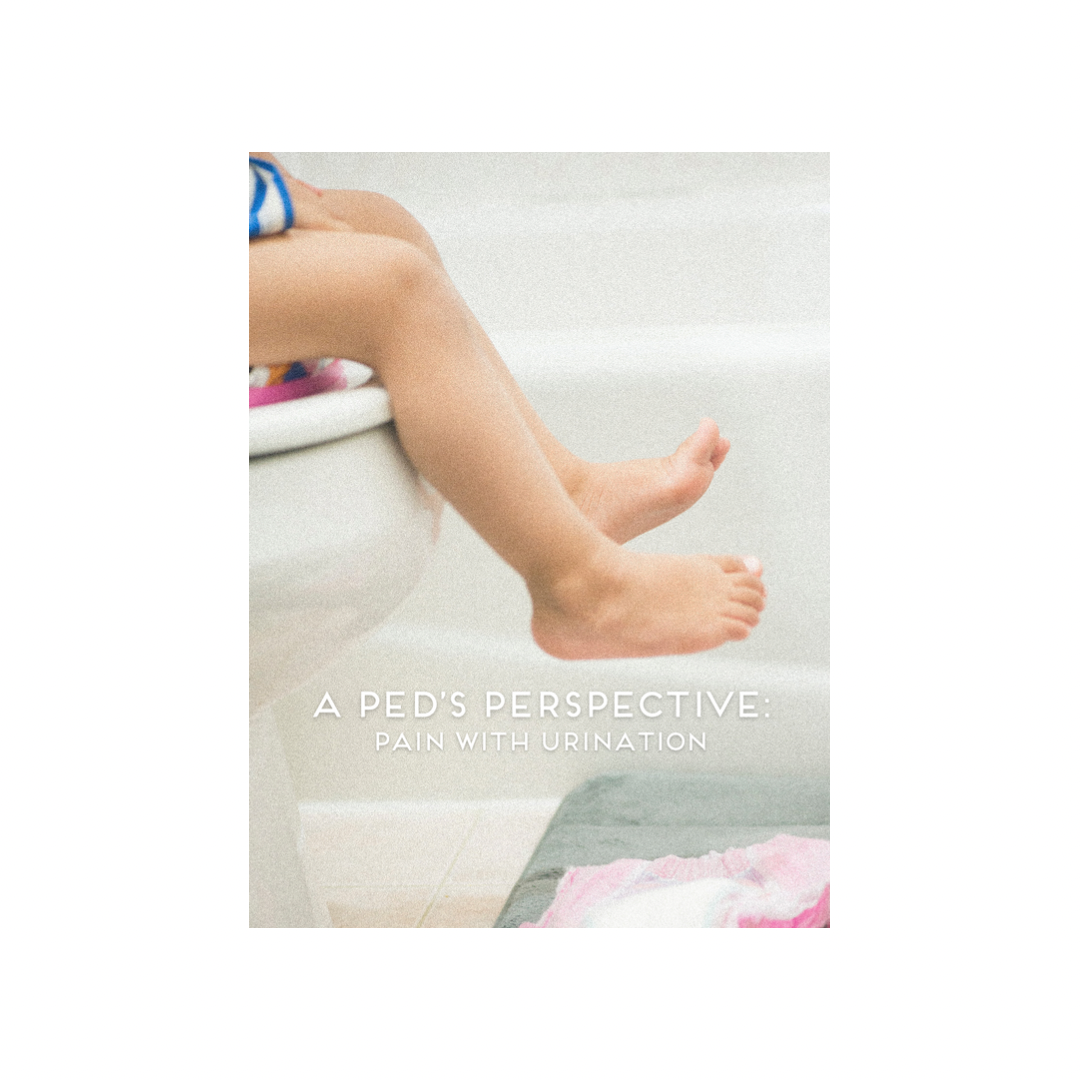A Ped’s Perspective: Pain with Urination (Dysuria)
Let’s dive into a common complaint: pain with urination or dysuria. Complaints of pain with urination understandably raises concern for a urinary tract infection (UTI), but I often find that it is actually related to irritation of the surrounding skin instead, called Acute Vaginitis. It is more common in females, but irritation surrounding the meatal opening in males can occur as well. Let’s chat through some of the common symptoms that can accompany dysuria, and then how to distinguish between acute vaginitis and a UTI.
Common Symptoms:
Visible redness around the opening of the vagina
Itching
Discharge
Foul smelling urine
Urinary frequency
Urinary urgency
Urinary accidents in a previously potty trained child
Lower abdominal pain
Fever >100.4
Irritability
Common Triggers for Acute Vaginitis:
Fragranced products: soap, laundry soap, fabric softener, dryer sheets
Bubble baths or bath bombs
Tight clothing (tights, leggings, leotards etc)
Wet diapers or swimsuits
Poor hygiene/wiping (common in school aged girls)
One of the very first questions I ask when I have a patient with a chief complaint of dysuria is “what personal care products do you use?” Products that contain fragrance or other chemicals can cause skin irritation including acute vaginitis. Bubble baths and bath bombs are probably the most common determined trigger I see in office. They are filled with chemicals, dyes, and fragrance that commonly irritate this sensitive skin area.
We personally love Young Living products because they are formulated without sulfates, parabens, phthalates, petrochemicals, synthetic preservatives, synthetic fragrances, or synthetic dyes. They also have a full line of products formulated specifically for babies and kiddos- I will share all of the products I recommend below.
Watchful waiting vs. evaluation?
If your child infrequently has any of the above symptoms or complaints, consider the common triggers, and make appropriate changes to your daily routine. Monitor for improvement to symptoms, and seek evaluation if symptoms persist. If your child is complaining of dysuria AND has a fever >100.4, I would seek evaluation right away at your medical home to rule out a UTI.
Acute Vaginitis vs. Urinary Tract Infection?
Fever >100.4 is the best indicator of a UTI vs acute vaginitis, but absence of fever does not rule out UTI. The only way to rule out a urinary tract infection is to collect a urine sample. The urine sample is looking for two components: nitrites and leukocytes (white blood cells). Nitrites are a bit more definitive for a UTI and are either positive or negative. Leukocytes can range from trace to large on a urinalysis if abnormal. Keep in mind that bacterial cells or “normal flora” live on the skin, and depending on how the urine is collected, contamination with normal flora can occur.
If there are any abnormalities on the urinalysis, it is important that it is sent for a urine culture to confirm true bacterial growth vs contamination. A urine culture also provides sensitivities to ensure that the right antibiotic is being used to manage the infection.
Supportive Management:
There are a few things that you can do to help manage acute symptoms. Ensure you are using a fragrance free laundry soap, double rinse cotton undies. Loose fitting clothing is preferred like a dress during the day and a nightgown to sleep. If swimming all day, take breaks from swim suit for lunch/snacks. Warm water sitz baths for 10-15 minutes, no soap. Showers instead of baths, avoid soap in sensitive area (soap is not necessary to clean sensitive area until after puberty). Apply a diaper cream or ointment to irritated skin; this allows the skin to heal, but also acts as a barrier to prevent the urine from touching the irritated skin.



